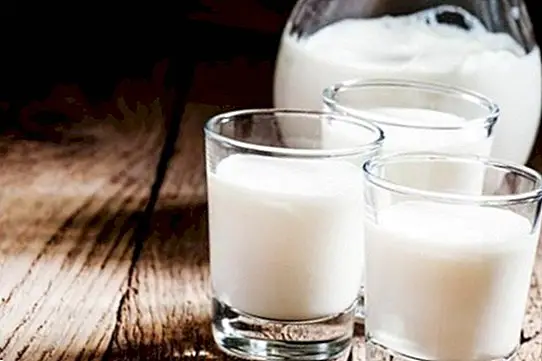Puerperal mastitis: symptoms, causes and treatment
The mastitis consists basically of the inflammation of the mammary gland, which can be affected in reality by a very wide variety of causes, many of them tremendously diverse, although it is usually associated with the Breastfeeding.
But obviously it is not the only one: for example, the massive production of the hormone prolactin (which stimulates the production of breast milk), or even the presence of a mastopathy (benign breast alteration), can cause an inflammation of the mammary gland of the woman. And only in rare cases can it be caused by a breast cancer or by certain types of tumors.

Therefore, given that mastitis outside the period of breastfeeding is considered infrequent, at the slightest symptom it is advisable to go to the doctor, who will probably ask for certain tests that help in the diagnosis: such as echogaphs, mammograms and blood tests. In fact, this type of inflammation usually tends to become chronic, and is also recurrent.
We may find ourselves facing bacterial or infectious mastitis. In these cases the main "culprit" is a bacterium known by the name of Staphylococcus aureus (considered in fact as the prototype of the most common species as the cause of acute mastitis), although it is not the only one. It can also be produced by the bacteria Staphylococcus epidermidis.
The mastitis It is one of the conditions that in addition to irritated or cracked nipples can suffer the breasts when the baby is breastfed. It is an infection that occurs in the ducts where breast milk circulates.
From a medical point of view, as we briefly indicated at the beginning of this note, mastitis consists of inflammation of the mammary gland, which occurs as a result of a obstruction of the milk ducts. This is why mastitis is also known by the names of ductal ectasia, periductal inflammation or subareolar abscess.

In case mastitis occurs during the period of breastfeeding (during which the mother is effectively breastfeeding the baby), it is known by the medical name of puerperal mastitis, or also with the names of postpartum mastitis or infectious mastitis. This occurs when it occurs in nursing mothers, so that non-puerperal mastitis is the one that occurs in the rest of the cases.
Symptoms of puerperal mastitis
The symptoms that can alert you that you might be affected by mastitis are the following:
- Symptoms similar to when you have a cold, tiredness, chills.
- Fever.
- Localized pain.
- Sensation of excessive heat in the breasts, in both or in only one (where mastitis has occurred).
- Redness in the breast
- Palpable and diffuse masses of variable size in the breasts.
- Abscesses
That is to say, The most common symptom is feeling intense pain and inflammatory signs, such as redness, induration and swelling. The pain tends to feel like "punctures," and areas of induration and / or cracks may appear.
In the presence of any of these symptoms you must go to the doctor to make the relevant review and prescribe the appropriate medication.
What are the causes of puerperal mastitis?
If mastitis has not been caused by an infection, in the case of puerperal mastitis it is caused by two reasons: either by the accumulation of milk in the breasts, or else clogged milk ducts.

When there is puerperal mastitis, infection can also occur. In these cases is due to the above, or in turn to the existence of germs that invade the breast tissue through fissures or cracks in the nipples (so common during breastfeeding).
Treatment of puerperal mastitis
When the existence of an infection is confirmed, the antibiotics, additional to prolactin inhibitors. Likewise, the consumption of paracetamol or ibuprofen helps to reduce and relieve pain.
On the other hand, medical specialists advise the application of wet and warm wipes directly on the breasts. In addition, unlike what is mistakenly thought, it is advisable to breastfeed your baby more often, always in greater quantity by the affected breast. This article is published for informational purposes only. It can not and should not replace the consultation with a Physician. We advise you to consult your Trusted Doctor.


